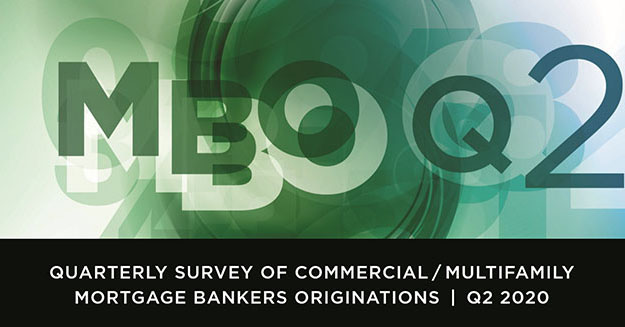
CMBS Market Musings by Andrew Foster

Andrew Foster is Associate Vice President in MBA’s Commercial/Multifamily Group. He is a former CMBS Analyst with S&P Global and Fitch Ratings. He began his career in commercial real estate working in CMBS special servicing with C-III. He co-authored a 2019 MBA white paper, “Role of CMBS in Financing Commercial and Multifamily Real Estate in America,” with current and former COMBOG members Chris LaBianca of UBS, Erin Stafford of DBRS Morningstar and Joseph Forte of AmTrust Title Insurance Co. He is a regular contributor to MBA NewsLink and MBA Commercial/Multifamily NewsLink and can be reached at afoster@mba.org or 202/557-2740.

For better but more often for worse it seems lately, the commercial mortgage-backed securities market is continuing to experience interesting developments, whether it be updated credit rating agency analysis on evolving outlook, recent insights on the landscape from the special servicing community or the latest from bank research desks and MBA’s latest Quarterly CMF Originations Survey.
Taken together, the analysis from industry thought leaders indicates that CMBS will continue to have challenges with existing loans through 2021 as new issuance remains robust for agency MBS and at a tepid pace for conduit transactions. Challenges with maturing loans are starting as well; however, 2022 will bring a major wave of those loans. The backdrop of government relief and actions as potential for additional support are hot topics across industry and CMBS is no different.
Below are several recent articles with analysis:
Coronavirus Curtails Refinanceability of Near-Term Maturing U.S. CMBS
•Fitch Ratings released a non-rating action commentary Thursday, noting:
“As the volume of maturities for U.S. CMBS increase over the next two years, Fitch Ratings expects the refinanceability of these loans to be curtailed by the current economic volatility, business interruption and secular shifts caused by the coronavirus pandemic.”
As of July 31, 2020, only $2.4 billion of performing, non-defeased loans within the Fitch-rated U.S. CMBS 2.0 conduit and Freddie Mac universe is scheduled to mature through the remainder of 2020. Overall maturities remain fairly manageable over the next five quarters, with an additional $12.2 billion in 2021 ($2.4 billion, $3.4 billion, $3.5 billion and $2.9 billion in each of the four quarters) but jumps more significantly to $21 billion in 2022.
Assessing the trouble ahead for commercial mortgages
•National Mortgage News published a story Thursday detailing the current state of CMBS market:
“As forbearances and government other relief efforts come to an end, many a commercial mortgage borrower will face a reckoning. Until now, delinquencies in the sector have been a little bit lower than expected, thanks to the Paycheck Protection Program and other funding that the government offered to help businesses. But there are already worrying signs of what may come when those plans expire.”
“Commercial servicers need to prepare for workouts with their borrower. Unlike most residential securitizations, the commercial sector does not have a standardization and as a result, modifications are going to be really on “a case-by-case basis, [depending] on the borrower and the sponsor and the structure and how much capital is really there, “said Anne Jablonski, the executive managing director and head of commercial real estate at SitusAMC, which is a master and special servicer.
“What we are really keeping an eye open on is what is going to happen [over the next few months]. We don’t know but we suspect that we will start to see delinquencies increase in those months as that funding runs out,” she said.
Despite the concerns on the horizon, there’s at least one bright spot in the world of commercial mortgages. “We’re starting to see the [commercial] securitization sector re-open. Investor demand has continued to stay strong and spreads have tightened back in,” Jablonski said.
Primary Market Bond Transactions and Pricing
In an August 14th research note, JPMorgan’s CMBS desk reported one Single Asset Single Borrower deal hitting the market for the third consecutive week. The transaction, MHP 2020-HILL (with a transaction size of $324m), backed by a pool of self-storage properties, priced its AAA-rated bond class (Moody’s-rated) at a spread of LIBOR +115 and its BBB- (Moody’s) rated class at L+235.
On the agency side, Freddie Mac kept strong momentum going with three new issues this week. FREMF 2020-KI06 (with a transaction size of $465m) placed its A tranche at L+22. Better pricing than the last Freddie KI deal priced back in January. FREMF 2020-KI06 also priced better multiple bond classes better than comparable transactions in the last few weeks. Lastly, one small balance deal, FRESB 2020-SB77 (transaction size of $425m), priced better than FRESB 2020-SB76 transaction issued in July.
Obstacles mount for passage of CMBS relief bill
Glen Fest reports in an Asset Securitization Report story last week, a bipartisan congressional bill introduced last month that would benefit struggling CMBS borrowers through a new Treasury-backed lending facility has moved on to the House Financial Services Committee for consideration. But passage could be an uphill battle, based on negative reaction to the measure.
Supporters tout the HOPE Act as a means to stave off foreclosures of commercial real estate properties hard hit by the COVID-19 fallout, notably lodging and retail properties. Many hotel properties, for instance, have had to negotiate with lenders to fund debt payments from reserve funds typically used for property fixtures and maintenance, according to an Aug. 3 report from Moody’s Analytics.
That is unsustainable, a Barclays CMBS strategist, Anuj Jain, said in an interview.
“Despite the [revenue] improvement since the lows in April, most hotels are still not able to break even or have positive cash flow, based on the recent earnings of lodging REITs,” Jain said. “It is possible that the reserves are so high that you can continue to get through this, but others, I think you can justify the need of for some kind of relief.”
Barclays’ report stated that not only might the bill draw the rancor of bailout opponents, subsidizing loans in some longstanding CRE trouble spots may not be sound investments for the government, such as shopping malls “which are experiencing a secular long-term decline.”
While in a Wells Fargo research note to CMBS investors last week, Lea Overby wrote, “with no fiscal deal on the horizon and COVID rates persistently high, we worry that the economic recovery may stall, with negative implications for CMBS performance. However, Congress’s inaction may prompt the Fed to increase its measures to boost the economy and to look for other tools to support the markets. Although chances of the HOPE Act passing (or any other legislation, for that matter) seem very slim, it is possible the Fed will look to aid CRE borrowers as it explores additional unconventional policy tools.”
Commercial/Multifamily Borrowing Falls 48 Percent in the Second Quarter of 2020

- MBA published its Quarterly Survey of Commercial/Multifamily Mortgage Bankers Originations.
“Commercial real estate borrowing and lending slowed dramatically in the second quarter, as uncertainty around the COVID-19 pandemic caused both borrowers and lenders to focus more of their attention on their existing books of business instead of new opportunities,” said Jamie Woodwell, MBA Vice President of Commercial Real Estate Research.
Among investor types, dollar volume of loans originated for CMBS decreased by 95 percent year-over-year. There was a 55 percent decrease for commercial bank portfolio loans, a 49 percent decrease in life insurance company loans, and only a 5 percent decrease in the dollar volume of government-sponsored enterprise (Fannie Mae and Freddie Mac) loans.
